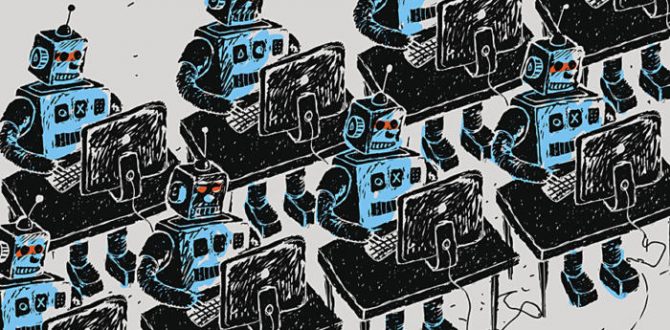Arthur C. Clarke, author of 2001: A Space Odyssey, wrote that “any sufficiently advanced technology is indistinguishable from magic.” A pithy maxim, to be sure, but one that deserves scrutiny.
After all, emerging technology isn’t conjured up like one of Merlin’s spells. Emerging technology represents a series of potential investments—in pure capital, time and energy—that have massive implications for the enterprise. Whether the discussion revolves around robotics or virtual reality, or what analyst firm IDC dubs “augmented humanity,” CIOs have an obligation to keep their eyes to the technological horizon. They must be judicious when assessing the emerging technology landscape, advocating for the smart calls that will help secure their respective organizations’ futures.
In this latest edition of our ongoing Quick Takes series, IT leaders from the CIO Executive Council provide their own in-depth takes on how they measure the value of emerging technology.
Kevin Neifert, CIO, Raytheon Company
The value of an emerging information technology to Raytheon is measured based on its projected impact on our business. An exceptional IT team knows there are only three possible sources of business value for an emerging technology; it can help us grow our revenue, improve our profitability, and/or help mitigate some risk that is important to the company as a whole.
My team uses our judgment and experience to identify technologies with business value potential, but our goal is to demonstrate one or more of these business value attributes as soon as it is practical. This approach keeps our technologists focused on closing the capability gaps that would keep us from delivering value and gives us criteria for rejecting what might seem like a good idea initially. This method also helps ensure we communicate with our leaders in “the language of the business.”
Sanjay Shringarpure, CIO, E. & J. Gallo Winery
Innovation is one of six company values at E. & J. Gallo Winery, which means it’s part of our job to challenge the conventional way of doing things. As a department of IT professionals, it is our duty to constantly evaluate emerging technology and its potential application at Gallo.
We see emerging technology providing value in numerous areas, but three stand out: new growth channels, driving competitive advantage and talent acquisition. At Gallo, we know consumer needs and behaviors are changing, and we believe emerging technology provides us the opportunity to connect with our consumer in more meaningful ways.
In addition, we seek out emerging technology in order to continuously drive competitive advantage from winemaking, all the way through the path to purchase. As Gallo continues to grow as an organization, we also recognize that emerging technology can play an important role in how we are perceived by the next generation of employees, and we must continuously ensure that we are providing the right tools for our workforce to compete and win in the marketplace.
Alan Stukalsky, CDO, Randstad North America
Today, it’s more important than ever to find new ways to drive innovation and increase value. To guide our digital transformation, Randstad invests in emerging technology to enable and improve our sourcing, hiring, onboarding/offboarding and sales processes. Through the Randstad Innovation Fund, we partner with startups such as Brazen, Crunchr, Checkster and HackerRank to fuel innovation in the HR industry.
Before investing, we assess tools and technology by making sure they align with our business strategy, make our recruitment process more efficient and deliver ROI. To expand our tech-driven capabilities, we are constantly researching early—to expansion-stage companies in the HR tech space with online platforms, big data analytics, social media aggregation, screening and selection tools and assess each according to the sector they are in. Our investment decision is then based on those that make the best fit strategically, culturally and financially.
Randstad’s Digital Factory is another initiative in which we identify the best internal and external solutions, develop new concepts and implement them globally. Additionally, to improve cost efficiency, increase agility and reduce time-to-market for new developments, we have created a Shared Service Center for IT infrastructure.
Even though digital is the new normal, the human element is still important. Technology delivers the seamless experience candidates and clients have come to expect in a modern, post-digital world. Yet, we know from our history, experience and daily interactions that real connections are not made from data and algorithms alone; they require human intuition, empathy and instinct.
John Hill, CIO, Carhartt
One of the challenges with regards to emerging technologies is to understand applicability to a business problem or opportunity. To that end, we run quarterly “Shark Tank” sessions as a way for teams to identify and demonstrate innovation opportunities. These sessions consist of six to eight teams that develop their submissions. The teams then spend one day implementing their solution. Each of the teams begins the day with an overview of the problem statement and the solution they have identified. At the end of the day, each team demonstrates the prototype they have built, and one or two winners are picked.
What this program has done is allow for the grassroots identification of emerging technology opportunities that would have otherwise not been identified in a traditional top-down portfolio situation. Our associates are the ones who are developing these solutions—not the management team. In addition to selecting a winner, each session has yielded several additional promising solutions. In fact, over the past two sessions, six different solutions have been identified for implementation. We view this as a great way to spur innovation here at Carhartt!
Berhanu Tadesse, AVP for IT/Infrastructure Services, California State University, Fullerton
The Division of Information Technology at California State University, Fullerton is committed to supplying the best technological solutions possible to enhance teaching and learning. In addition, we recognize the need to be innovative in delivering solutions that meet the expectations of incoming students. In alignment with our institutional and Information Technology Strategic Plan goals, we work with campus constituents to identify technological solutions that will be able to help close achievement gaps and raise graduation rates.
We deployed the Watson Developer Cloud and other Bluemix services to the campus. Using this IBM Watson technology, we successfully rolled out a ChatBot, branded as iTuffy, to the campus. The iTuffy ChatBot helps answer general campus questions using natural language. Students interact with the ChatBot on their phones, asking questions and getting immediate responses just as if they were conversing with a live person. iTuffy is a personal assistant for students allowing them to find information and get answers to their questions 24x7x365.
The Bluemix service logs are reviewed and evaluated on a regular basis to assess utilization and improve natural language recognition. Through this review of the logs, we discover what information students are requesting and are able to integrate it into the ChatBot immediately. Through reviewing these logs, we hope to better assess student retention and student success.
Ken Piddington, CIO, MRE Consulting
Assessing the value of an emerging technology is about business benefits and risk. A trusted and repeatable framework is critical for consistently and objectively assessing the value of any emerging technology. There are two parts to my framework for assessing the value of emerging technology.
The first part is the foundation, and needs to be in place regardless of the type of technology being assessed. The foundation is comprised of risk tolerance, philosophy/strategy, and vendor evaluation method. The organization’s appetite or ability to take on potential risk must be well understood. An emerging technology strategy and philosophy (innovator, first mover, fast follower, laggard) needs to be in place. As part of the vendor management process, a method to evaluate and score vendors is required.
The second part of the framework is about business outcomes. This includes potential short and long term business impact, business relevance, technology viability, trend analysis, business scenario visualization, and traditional cost-benefit analysis. The business outcomes part of the framework is where the rubber hits the road and ultimately determines if the emerging technology can provide the right type of value to the organization.
Applying the components of the framework enables consistent and objective value assessment of emerging technology through a business benefits and risk lens. The framework and processes were developed as part of my vendor management initiative called the Strategic Partner Program.
Rob Hanlon, SVP and CIO, TreeHouse Foods Inc.
Anytime we are introduced to emerging technologies, I quickly assess the concept through six filters to determine an investment scenario.
1. Business Strategy – Can I see a clear path for the technology to stretch the edges of our business strategy or unlock new capability?
2. Market Potential – Can I clearly articulate an impact the technology can have on the levers that drive my P&L; revenue, cost of goods and G&A?
3. Business Investment – Can I identify a Business Leader to stand with me and articulate the impact to strategy and P&L?
4. Business Conditions – Does my current IT and business environment have the capacity to nurture a pilot and minimized risk aversion?
5. Ability to Scale – Will I be able to affordably scale the technology and minimize the adverse impact to my current operations?
6. Agility to Invest – Will my governance process effectively examine the program to nurture, scale or terminate a pilot based on objective criteria?
These six filters inform my investment decision in an ever-changing business environment as well as across the industry.












